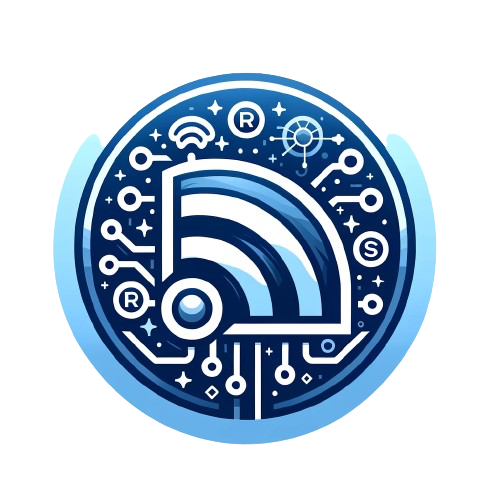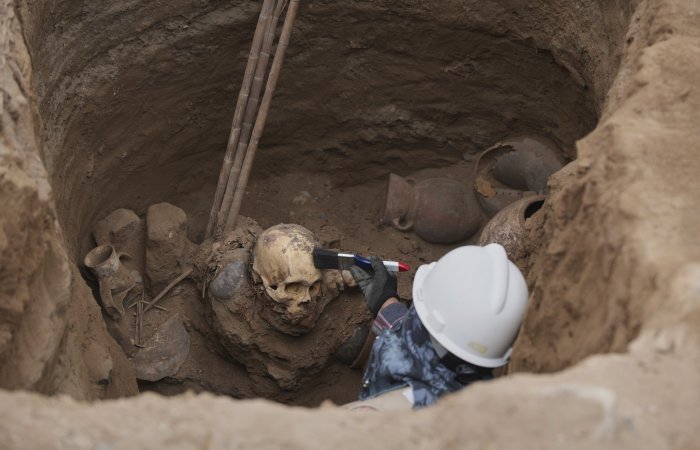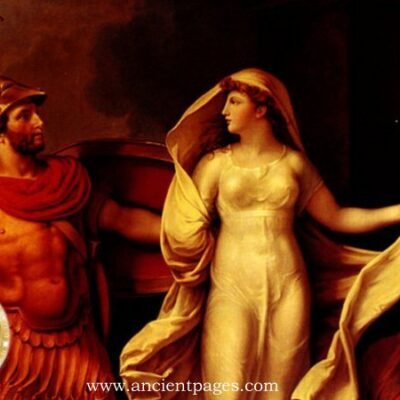Jan Bartek – AncientPages.com – The Chancay civilization, which flourished during the latter part of the Inca Empire, remains somewhat enigmatic due to the limited historical records available.
However, archaeological findings have shed light on this culture that thrived between approximately 1000 and 1470 CE in the valleys of Fortaleza, Pativilca, Supe, Huaura, Chancay, Chillón, Rimac, and Lurín along Peru’s central coast. Emerging after the decline of the Wari civilization, parts of the southern Chancay territory were conquered by the Chimú in the early 1400s. By around 1450 CE, both regions fell under Inca control as their empire expanded.
Archaeologist Jose Aliaga is conducting research at a site where city workers uncovered ancient remains and artifacts belonging to the pre-Inca Chancay culture. This discovery occurred while workers were installing a natural gas line for the company Calidda in the district of Puente Piedra, located on the outskirts of Lima, Peru. Credit: AP Photo/Guadalupe Pardo
The Chancay likely maintained a centralized political structure and formed a small regional state before their decline in the late 15th century due to Incan expansion. Primarily based in the Chancay and Chillón valleys but also occupying areas like the Rimac and Lurín valleys, their cultural center was situated about 80 kilometers north of Lima.
The Chancay culture, the first Peruvian civilization to engage in the mass production of ceramics, textiles, and metals such as gold and silver for both ritualistic and domestic purposes, remains a subject of ongoing study. Renowned for their wood-carved items and exceptional painted tapestries, the Chancay featured geometric designs with depictions of plants, animals such as fish, cats, birds, monkeys, and dogs (notably the hairless Peruvian dog), as well as human figures. The survival of many Chancay textiles today indicates extensive production due to the large quantities preserved. Additionally, they crafted dolls and other objects adorned with woven fabric and various threads.
Chancay textile doll. Credit: Public Domain
Architecturally significant as well, the Chancay developed large urban centers characterized by pyramid-shaped mounds and complex buildings organized into different settlements known as ayllus. These were governed by leaders called curacas. The urban centers included constructions for civic-religious functions alongside residential palaces. Their considerable size likely reflects their ability to produce goods in large quantities.
Recent discoveries may offer further insights into this Pre-Incan culture. Two tombs attributed to the Chancay were recently uncovered by utility workers expanding underground gas networks in Lima. While one tomb was empty, another contained remains dating back a millennium alongside four clay vessels and three pumpkin shell artifacts.
This discovery is part of a broader pattern; Cálidda—the company responsible for distributing natural gas in Lima—has reported over 2,200 archaeological finds during more than two decades of excavation work for network expansion across Peru’s capital.
In Lima, Peru, construction workers have made a surprising discovery: the remains of a 1,000-year-old mummy found in a tomb hidden beneath the city streets. Credit: Reuters
Archaeologist José Aliaga shared with The Associated Press that the vessels’ iconography and their distinctive black, white, and red colors enabled researchers to link them to the pre-Incan Chancay culture, which dates back approximately 1,000 to 1,470 years. Aliaga noted that the individual was discovered wrapped in a torn bundle, seated with legs drawn against the chest. His team plans to continue cleaning these remains.
See also: More Archaeology News
Aliaga highlighted Lima’s uniqueness among Latin American capitals due to frequent archaeological discoveries during nearly every civil project. According to the Ministry of Culture, Lima—a bustling city of 10 million residents—boasts over 400 archaeological sites from both the Inca era in the 15th century and earlier periods predating Incan civilization.
Written by Jan Bartek – AncientPages.com Staff Writer








